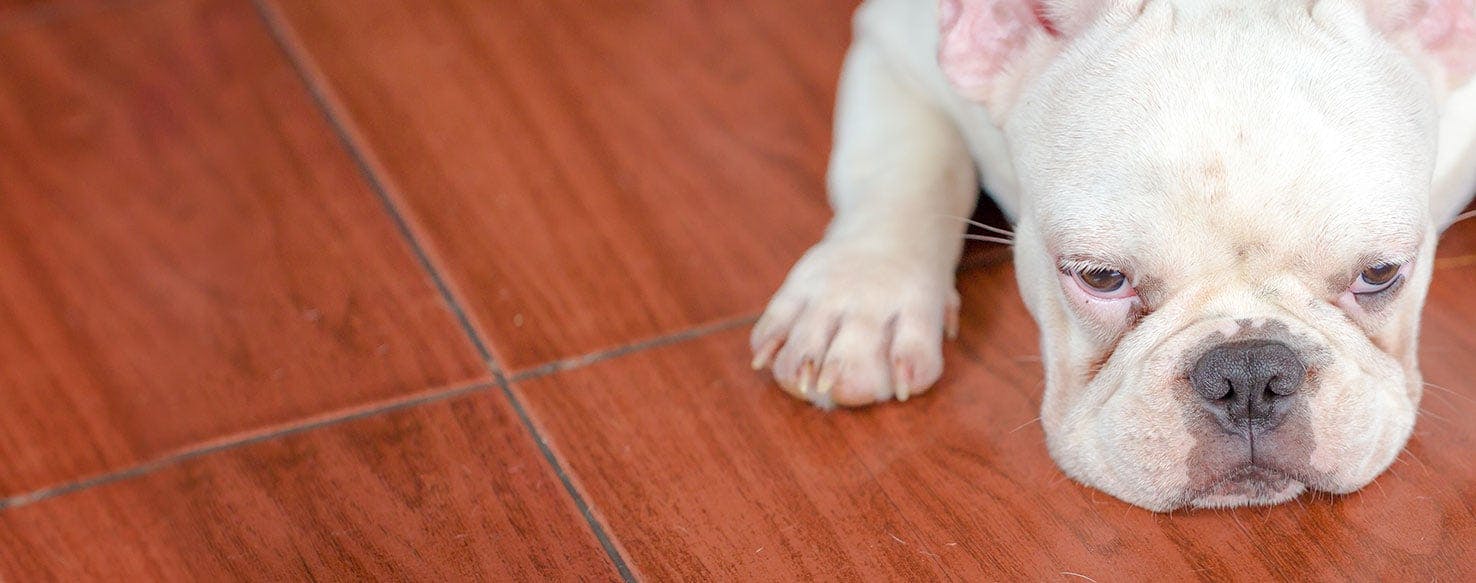- Home
- The Daily Wag!
- Behavior
- Why Bulldogs Sleep Sitting Up

Unusual
Concerning
Bulldogs are one of the most popular dog breeds
in the United States, and they are well-loved and appreciated for their gentle
nature and iconic facial features. They make for excellent apartment
companions, making them especially popular in dense, urban areas where larger,
more active dogs might have a hard time fitting in. Unfortunately, the same facial features that
most people fall in love with in a Bulldog might also be causing dogs serious
problems. Videos of Bulldogs falling asleep sitting upright and snoozing in
other awkward positions have long been viral staples, but veterinarians and dog
lovers are concerned that the reasons for these sleeping problems are not
entertaining. Here are some reasons that Bulldogs sleep sitting up.
Bulldogs that fall asleep in awkward positions are exhibiting a behavior that other dog breeds exhibit in rarer causes of injury or physical health problems. Underlying conditions—most commonly hip dysplasia—make it difficult for dogs to fall asleep in natural positions. Dogs that suffer naturally from spine or hip irregularities tend to prefer alternative sleep positions. Although these positions can appear funny or awkward to the casual observer, in reality, the positions may be the only position that the dog is comfortable sleeping in. The Bulldog, in particular, is susceptible to numerous physical health issues; an estimated 72% suffer from hip dysplasia alone. The fact that alternative sleeping behaviors are so much more common in Bulldogs is of much concern to dog lovers.
Although hip dysplasia and spine problems are common in Bulldogs, they are only a small part of the everyday battle that some Bulldogs must face. It is difficult for most Bulldogs to lie down, let alone fall asleep, given that their flat faces often make it difficult to breathe. The Bulldog and its surrounding breed families, including Pugs and Terrier mixes, are called brachycephalic breeds. This term identifies dogs who have been selectively bred to have flatter and flatter faces. Aesthetically, people seem to love the pushed-in face and wide features, but unfortunately, the health risks and cost to Bulldogs have made it difficult for them to live easily.
It is not uncommon for a particularly brachycephalic dog to experience chronic shortness of breath and lack of oxygen. Imagine living your entire life without being able to take full, deep breaths and you are feeling what a Bulldog might feel on a day to day basis. Without the ability to properly and comfortably breathe, Bulldogs become overheated, are susceptible to fainting, and develop sleeping disorders. It is for this reason that exhausted Bulldogs may take to sleeping sitting up, or in extreme cases, even standing up. The problem cannot easily be addressed, as the breed has been engineered over several generations to have the flat, wide facial features that it is praised for.
Need advice about your pet's health?
Get answers fast from a veterinary professional 24/7 in the Wag! App.
Get Vet ChatAlthough there is not much that you can do to address the genetically problematic qualities of the breed, there are some ways that you can help ensure that your dog is getting the sleep, rest, and oxygen that he needs to live as healthy a life as possible. The first step is to determine to what extent your dog suffers from his brachycephalic features. Animal cruelty prevention societies and veterinarian associations have made online tools publicly available to Bulldog owners in order to inform them as to whether or not their dogs might be at risk for brachycephalic syndrome. By simply becoming aware of your Bulldog’s breathing abilities, you are setting yourself up for the best possible care that you can provide.
You will need to work closely with your
veterinarian to make sure that any and all health issues that your Bulldog is
facing are accounted for. Most veterinarians suggest that weight control is the
most important aspect of helping your Bulldog breathe easier. Obese Bulldogs
suffer far more than Bulldogs that are kept within a healthy weight range.
Maintaining cool temperatures and limiting your dog’s exercise will also help
to keep him from struggling to breathe. Beyond this, you may look into
purchasing an orthopedic dog bed to relieve your Bulldog’s physical pain and
assist him in breathing easily throughout the night.
There are many visible signs that your dog is
suffering from its brachycephalic features. If your Bulldog breathes loudly,
makes grunting or snuffling noises frequently, snorts while eating or
exercising, and shows distress when playing, it is highly likely that your dog
is suffering from brachycephalic syndrome. These problems tend to be more
prevalent the more purebred a Bulldog is, particularly among the English
Bulldog breed. Selectively bred dogs like the French Bulldog will also have
many of these problems. Mixed breeds—typically bred between Bulldogs and
Terriers—have significantly less health problems, so much so that the question
surrounding English Bulldogs at the moment is whether or not it is possible and
ethical to continue the purebred line.
Bulldogs have long been one of the most popular
breeds in the United States, and it isn’t wrong to love them, or to want to own
one. Just make sure that you are aware of the health risks associated with the
breed, and you will be able to provide the highest quality care possible for
this affectionate and gentle breed.
Written by a Australian Shepherd lover Jonah Erickson
Veterinary reviewed by:
Published: 04/12/2018, edited: 01/30/2020
More articles by Jonah Erickson

